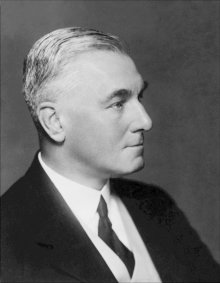
Spilsbury was born on 16 May 1877 at 35 Bath Street, Leamington Spa, Warwickshire. He was the eldest of the four children of James Spilsbury, a manufacturing chemist, and his wife, Marion Elizabeth Joy.
On 3 September 1908, Spilsbury married Edith Caroline Horton. They had four children together: one daughter, Evelyn, and three sons, Alan, Peter, and Richard. Peter, a junior doctor at St Thomas's Hospital in Lambeth, was killed in the Blitz in 1940, while Alan died of tuberculosis in 1945, shortly after the Second World War.
The deaths (of Peter, in particular) were a blow from which Spilsbury never truly recovered. Depression over both his finances and his declining health are believed to have been a key factor in his decision to commit suicide by gas in his laboratory at University College, London in 1947.
In later years, Spilbury's dogmatic manner and his unbending belief in his own infallibility gave rise to criticism. Judges began to express concern about his invincibility in court and recent researches have indicated that his inflexible dogmatism led to miscarriages of justice.
Educated at Magdalen College, Oxford, he took a BA in natural science in 1899, an MB BCh in 1905 and an MA in 1908. He also studied at St Mary's Hospital in Paddington, London, from 1899. He specialised in the then-new science of forensic pathology. In October 1905, he was appointed resident assistant pathologist at St Mary's Hospital when the London County Council requested all general hospitals in its area appoint two qualified pathologists to perform autopsies following sudden deaths.
Important cases
The case that brought Spilsbury to public attention was that of Hawley Harvey Crippen in 1910, where he gave forensic evidence as to the likely identity of the human remains found in Crippen's house. Spilsbury concluded that a scar on a small piece of skin from the remains pointed to Mrs Crippen as the victim.
Spilsbury later gave evidence at the trial of Herbert Rowse Armstrong, the solicitor convicted of poisoning his wife with arsenic.
The case that consolidated Spilsbury's reputation as Britain's foremost forensic pathologist was the "Brides in the Bath" murder trial in 1915. Three women had died mysteriously in their baths; in each case, the death appeared to be an accident. George Joseph Smith was brought to trial for the murder on one of these women, Bessie Mundy. Spilsbury testified that since Mundy's thigh showed evidence of goose skin and, since she was, in death, clutching a bar of soap, it was certain that she had died a violent death – in other words, had been murdered.
Spilsbury was also involved in the case of the Brighton trunk murders. Athough the man accused of the murders, Tony Mancini, was acquitted, he confessed to the killing just before his own death, many years later, vindicating Spilsbury's evidence.
Spilsbury was able to work with minimal remains, such as those involved in the Alfred Rouse case (the "Blazing Car murder"). Here, a near-destroyed body was found in the wreck of a burnt-out car near Northampton in 1930. Although the victim was never identified, Spilsbury was able to give evidence of how he had died and facilitate Rouse's conviction.
During his career, Spilsbury performed thousands of autopsies, not only of murder victims but also of executed criminals. He was able to appear for the defence in Scotland, where his status as a Home Office pathologist in England and Wales was irrelevant: he testified for the defence in the case of Donald Merrett, tried in February 1927 for the murder of his mother and acquitted as not proven.
Spilsbury was knighted early in 1923. He was a Home Office-approved pathologist and lecturer in forensic medicine at the University College Hospital, the London School of Medicine for Women and at St. Thomas' Hospital. He also was a Fellow of the Royal Society of Medicine.
On 17 July 2008, files containing notes on deaths investigated by Spilsbury went under the hammer at Sotheby's and were acquired by the Wellcome Library in London.The files' index cards documented deaths in the County of London and the Home Counties from 1905 to 1932. The hand-written cards, discovered in a lost cabinet, were the notes that Spilsbury apparently accumulated for a textbook on forensic medicine which he was planning, but there is no evidence that he ever started the book.








No comments:
Post a Comment
Terima kasih di atas komen / cadangan anda...